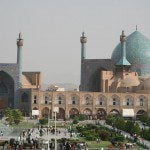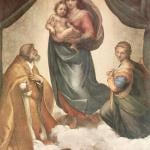 When I was at the recent Wheaton theology conference, I could not help but pick up a copy of the new Ancient Christian Doctrine (ACD) series (vol. 2 on Jesus as Lord) from IVP. For those familiar with the Ancient Christian Commentary on the New and Old Testaments, this ACD series has a similar style, but instead of working through a biblical text, it works through a doctrine (or set of doctrines) giving the viewpoints (in fresh translations) from a range of Church Fathers.
When I was at the recent Wheaton theology conference, I could not help but pick up a copy of the new Ancient Christian Doctrine (ACD) series (vol. 2 on Jesus as Lord) from IVP. For those familiar with the Ancient Christian Commentary on the New and Old Testaments, this ACD series has a similar style, but instead of working through a biblical text, it works through a doctrine (or set of doctrines) giving the viewpoints (in fresh translations) from a range of Church Fathers.
The series is designed based on the ‘Nicene-Constantinopolitan Creed’ where each ACD volume concentrates on a part of the creed. So far, there are five volumes: We Believe in One God (Gerald Bray), We Believe in One Lord Jesus Christ (John Anthony McGuckin), We Believe in the Crucified and Risen Lord (Mark Edwards), We Believe in the Holy Spirit (Joel Elowsky), and We Believe in One Holy Catholic and Apostolic Church (Angelo Di Berardino).
One thing I appreciate is that before the display of texts for each section, the author/editor explains the historical context of the creedal statement and why it was important to the formulation of the creed.
In the second volume on Jesus as Lord, here are some excellent comments about who the Son is.
Gregory of Nazianzus is typical of the view that the Son is special and has a unique relationship with the Father as both were involved in creation: ‘He, the living image of his Father, is alone Son of the one who is without beginning, unique Son of the only God, equal in excellence, so that the one should remain entirely Father, while the Son should be the founder of the universe who steers its course, at once the strength and understanding of the Father’ (p. 5)
Origen is also indicative of a view that Jesus reveals and makes known the identity of God: ‘He is called the Word because he is, as it were, the interpreter of the secrets of the mind of God’ (p. 37)
Athanasius is fond of using analogies for how there is oneness and distinction with Jesus and the Father: He uses the imagery of Father and son, as they have one nature, ‘for the offspring is not unlike the parent, being his image’, but they are separate persons. Also, he uses the example of the sun: ‘No one would say that there are two lights, even though the sun and its radiance are two’ (p. 46).
NT and OT researchers will especially find useful the Scripture indexes in the back of the book – it is interesting to see which texts are consistently used in argumentation regarding certain doctrines and their defense and development.
I am very excited about this series and I have already read through the first two volumes (one I checked out from the library). I look forward to how this project works out and I thank the editors for their vision and labor.











